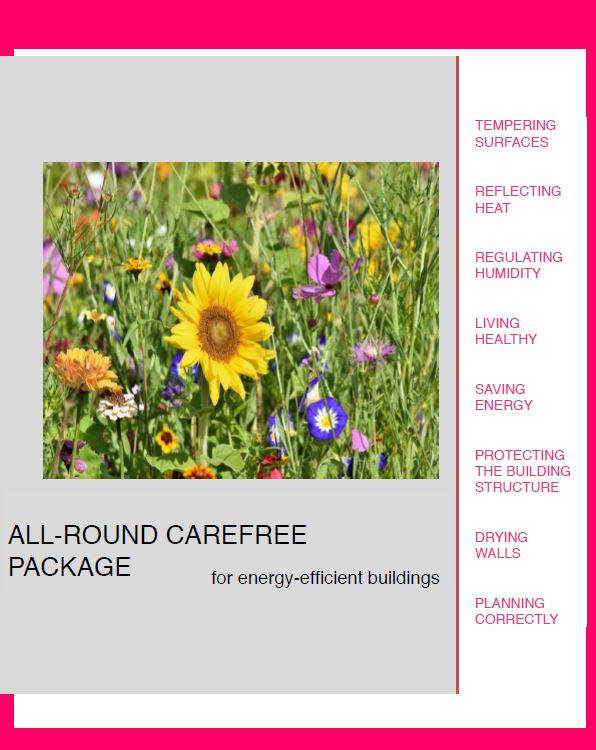THERMOLINE-HOME
SAVE ENERGY - HOW DOES IT WORK?
The problem is
Due to the change from radiant heat (stove heating) to convective heat (central hot water heating) in building heating systems about 60 years ago, structural defects arose which were subsequently supposed to be remedied by problem solutions (insulation, insulated glass windows, additional ventilation systems), but instead, they led to more and more problems ... especially when it comes to human health.
The EnEV (Energy Saving Ordinance) is supposed to lead to less energy being consumed, but unfortunately, the opposite is the reality. In building physics, stationary conditions are assumed for the theoretical calculation of the heat requirements of buildings.
The U-value, which describes the theoretical instantaneous or steady-state condition, is completely impractical and can only be simulated in a climate chamber in the laboratory. Wind, humidity, and solar radiation in and on building shell construction are significantly involved in heating energy consumption.


The solution is
The prerequisite for heating cost-saving alternatives is to create dry and therefore heatable building components. Contrary to conventional heating systems, in which warm air is generated in living spaces, the temperatures of the surfaces inside the outer walls have to be raised by our problem solvers.
Wherever there are people, animals, and plants, wherever climatic conditions determine our lives, it is transient and dynamic conditions that lead to heat loss in buildings. The simplest objective must be:


